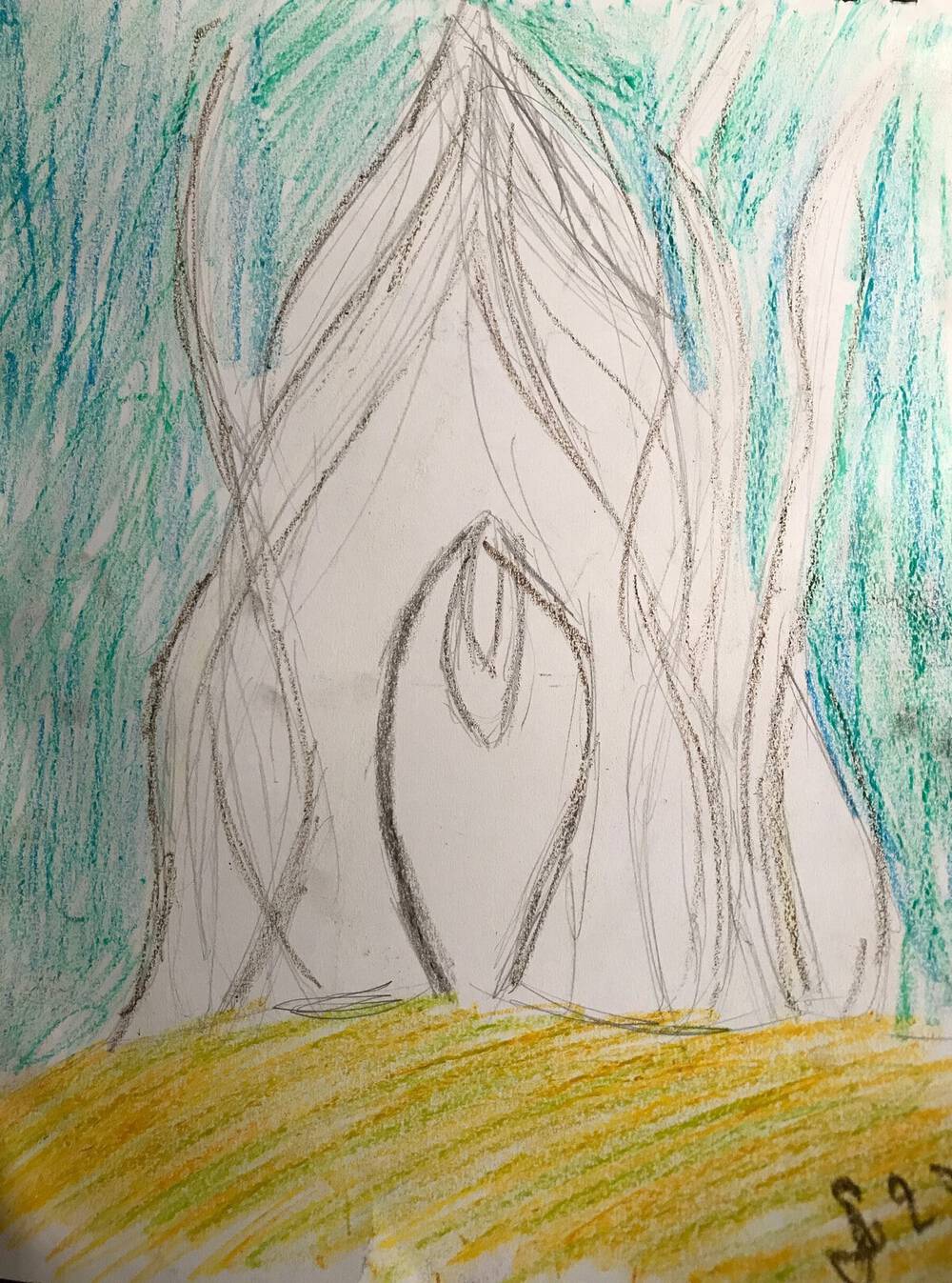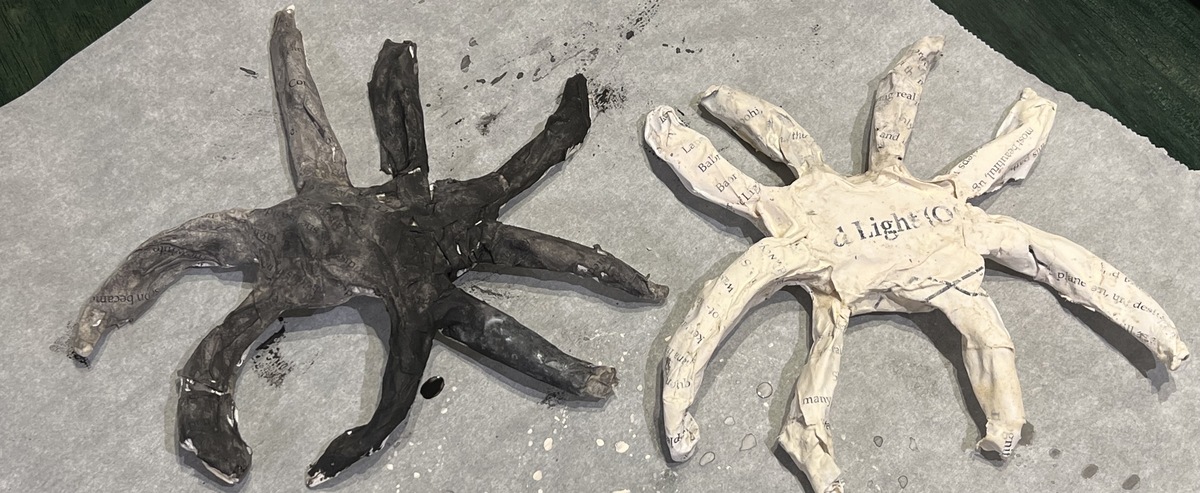The Madness of Light: Religion and Dogma

The Madness of Light is about religion—the fall of a religion.
This religion being that which concerns itself with the lines Zfhi and Zfnoc. Families given the divine right to wield the Gods of Dark and Light given form as staves. These ‘sticks’ (as Balon calls them) are the source of their divine aspect and yet it is their blood that determines that ‘truth’. The Avatars wield the ‘Gods’ of Dark and Light by right of eldest blood.
In Buhukiea, the divine are a clear and present presence. The Zfnoctewoohi lines, however, are blurred with them. Unlike Haeihlseth or the Ascended who achieved such standing, these lines are simply granted that by merit of being born with that blood.
Against everything else, this concept is almost absurd. There is no reason to it. No expression of why they are chosen—it’s all based in this ‘divine’ tradition. Tradition that has led to mad or corrupt Avatars. The power of dark and light, at this level, has a subversive influence on its user. It is a curse. And yet generations have gone by without an attempt to escape it—accepting it as part of their being.
Until Kharenela and Rayacha Chajaran. They are the ones who start this judgement of the dogma—the fall of it. Rayacha Chajaran is an outsider; Kharenela an Avatar Zfhi. Kharenela is dead, of course, by the time the events of TMOL happen. Rayacha is the outsider and a believer with reservations.
Together they decide to act upon it—to prevent the catastrophe that could happen. They conceive of a way forward—progression. They try to push back against the dogma by way of Lana Zfhi and Nielkov Zfhi. Twins. That was their plan. That was it.
Kharenela cannot live to see this come to fruition. He tries to change the future without knowing what it holds. The burden of it goes to his children. This has been also tradition—transferring the burden to the next generation.
The weight of this affects each of the related characters differently.
Lana Zfhi wants to destroy it. She manipulates and conspires to go further than her parents’ intent and to uproot the entire construct. She rejects it.
Nielkov Zfhi accepts his fate. If madness is knowing too much, Nielkov was not mad—he knew exactly as much as he needed to. And he was content with that role and no more.
Rayacha Chajaran, despite being an outsider, allows herself to be burdened by it. She wants to make it better but she has no stake in it. She develops stake in it by her actions.
Despite the goal of Lana’s actions, all their actions, to be the end of this burden, these chains of blood, Balon Zfnoctewoohi, the youngest of them, must bear all of their choices. Her blood is the divine mix and yet she was conceived to be the instrument of its undoing. She hates the dogma. The dogma has tainted her life—the dogma has made her. Rather, the rejection of dogma is the basis for her existence.
But in that rejection lies acceptance of its truth. Balon Zfnoctewoohi recognizes her ’true’ blood as actually being more than others. Because a testament to this exists in plain reality—the Cathedral of Light.
The Cathedral of Light is a structure that made of a substance that glimmers brilliantly to only those that are of the true Zfhi blood. Only those ‘chosen’ by circumstance are graced with its beauty.
Balon sees it. Balon knows and relishes it—despite what it means. It is clear icon of the dogma. It is proof of its validity. And yet it is a place that is fundamentally hollow. It is wide and spacious and yet it is always going to be empty. It is a farce of a structure that is somehow true and right.
And within it, time and again she finds Lana Zfhi in the Cathedral. In the seat of their divine right for the black and white sticks, Balon sees Lana Zfhi. Graceful, ethereal, and to be worshipped. Balon worships and cares for her mother. The only words that come to mind on how to describe Lana’s demeanor to Balon before the end is like a Goddess or Angel in our sense.
Despite that, Balon perceives her as burdened by her grace. She hates this part of her—but loves her mother who gave her this life. She hates that her mother has this life. And yet she still sees her mother as a holy figure. Regardless of the causality. Regardless of the fact, that she eventually finds out, that Lana’s actions have burdened Balon more than any predecessor had been by the dogma. Lana’s plot to end the dogma was based on the concept of Balon—her existence was a tool.
But things change, the end of this dogma, is shifted with the discovery of another tool. Vashwva or not, Lana Zfhi is the seizer of the Primordial Essence of Order—The Spider of Light. An object made heretically, one that was always and never was, becomes the tool, the instrument, for Lana Zfhi to enact a plan to end the divine line in a way never thought possible. The Spider of Light is beyond the Stave, beyond anything, and Lana Zfhi recognizes it. She uses it properly and without error.
And she worships it with her actions. The worship that ought to have been for the Stave shifts to worship for the Spider to end it. And it does.
The Stave shatters and Lana Zfhi dies—with her, the purity of her line. Lana Zfhi, although ethereal, although brilliant, was at her end, ‘just white’. Among the shattered pieces of her divine right, among objects far beyond them, she bled the blood that was supposedly true and it did not glimmer. It was.
Despite that, because of that, Balon at the end takes the mission like a divine quest—her worship is for Lana and for the end of it all. She accepts being the Avatar of Twilight. She despises it but owns it. It is the Vashwva she will see done. This becomes her religion. Lana is the catalyst and bringer of it.
The fall of Zfnoc and Zfhi is her dogma now.
The rejection of religion, in its sheer reverence to that end, become worship in of itself. The end of the dogma becomes as potent of a dogma as the dogma it seeks to end.
This statement, this phrase, cannot be ignored in its relevancy:
The highest form of devotion to something is the voluntary destruction of it.
Perhaps all this was demonstrating the highest form of worship to the concept of the true Zfnoctewoohi—after all, the end of this involves Balon Zfnoctewoohi as the intersection of both. The realization of twilight as a concept that succeeds its makers.
Or perhaps not.
Perhaps it was the end without another beginning.
Whatever comes from it…
There is no past to give indication. There is only freedom to decide.
Related/Recent Posts
Book Art: TMOL/TCOD as Spiders

Finally got around to making paper mache book art copies of The Madness of Light and The Corruption of Dark. It should be no surprise that they were both made into the form of a spider. Spiders are more complicated than a Clam or a Scorpion, so a wire ‘skeleton’ was used to create their structure before applying paper mache layers around it. I applied multiple rounds of layers onto it to build it up, air drying in between rounds....
Sorting the Characters into Hogwarts Houses (Part 3)
This is part three of my Hogwarts Sorting. Here I finally sort some side characters: Marcus, Jessica, Ramulein, Nefertiti, Chatzu’kuan, and Robo-Knight! I don’t think any of these are controversial. These were pretty easy to figure out, all things considered. {% include image-with-text.html src=”posts/hogwarts-houses/Ravenclaw.png” alt=”Ravenclaw House Crest” title=”<h2>Marcus & Jessica - Ravenclaw</h2>” text=”<p>Marcus and Jessica are both unique individuals driven to creative professions. Beyond that, they have shown curiosity and a desire to learn more of the strange world they...
